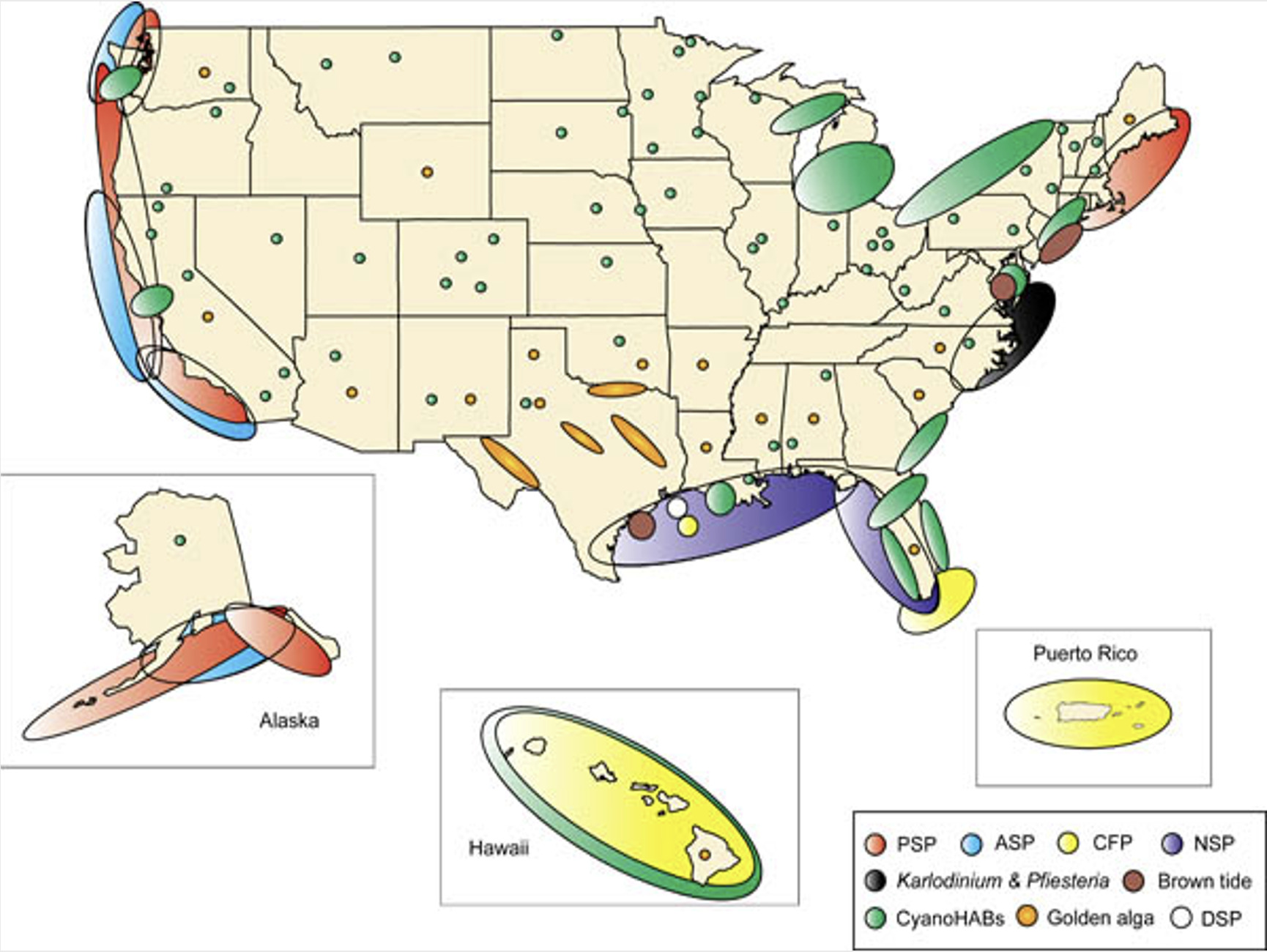There has been an unprecedented global increase in the frequency, intensity, and duration of HAB events which poses a serious threat to the safety of our seafood, recreational use of the ocean, and even the tourism industry. Approximately sixty-five percent of the estuaries and coastal waters in the U.S. are moderately to severely degraded (NOAA) and, as visible in the figure below, almost every coastal country has been impacted by HABs in the last 40 years. Increased eutrophication, changes in agriculture and aquaculture practices, overfishing, ballast water discharge (which can carry invasive HAB species), and global climate change all likely play important roles in this global increase.

Biological, chemical and physical factors contributing to algal bloom formation. Image credit A. Joyner UNC-CH Institute of Marine Sciences
Many HAB species secrete toxins which are detrimental to marine life and can cause skin irritations, vomiting, headaches, and liver issues in humans when exposed (Anderson, Boerlage, & Dixon, 2017). As such, HABs can have severe social and economic consequences as evidenced by Lake Erie in North America (as seen in Figure 5) where HABs have, at times, rendered the water supply undrinkable, caused beach closures, poisoned seafood, and reduced property values by an estimated $11 billion.

Map showing common HAB species and the respective locations where they commonly occur in the Gulf of Mexico and the coastal US. Abbreviations: Amnesic shellfish poisoning (ASP), Ciguatera fish poisoning (CFP), Diarrheic shellfish poisoning (DSP), Neurotoxic shellfish poisoning (NSP) and Paralytic shellfish poisoning (PSP). Image credit: Figure from US National Office for Harmful Algal Blooms pulled from Erdner, D.L., Dyble, J., Parsons, M.L., Stevens, R.C., Hubbard, K.A., Wrabel, M.L., Moore, S.K., Lefebvre, K.A., Anderson, D.M., Bienfang, P. and Bidigare, R.R., 2008. Centers for Oceans and Human Health: a unified approach to the challenge of harmful algal blooms. Environmental Health, 7(2), pp.1-17.